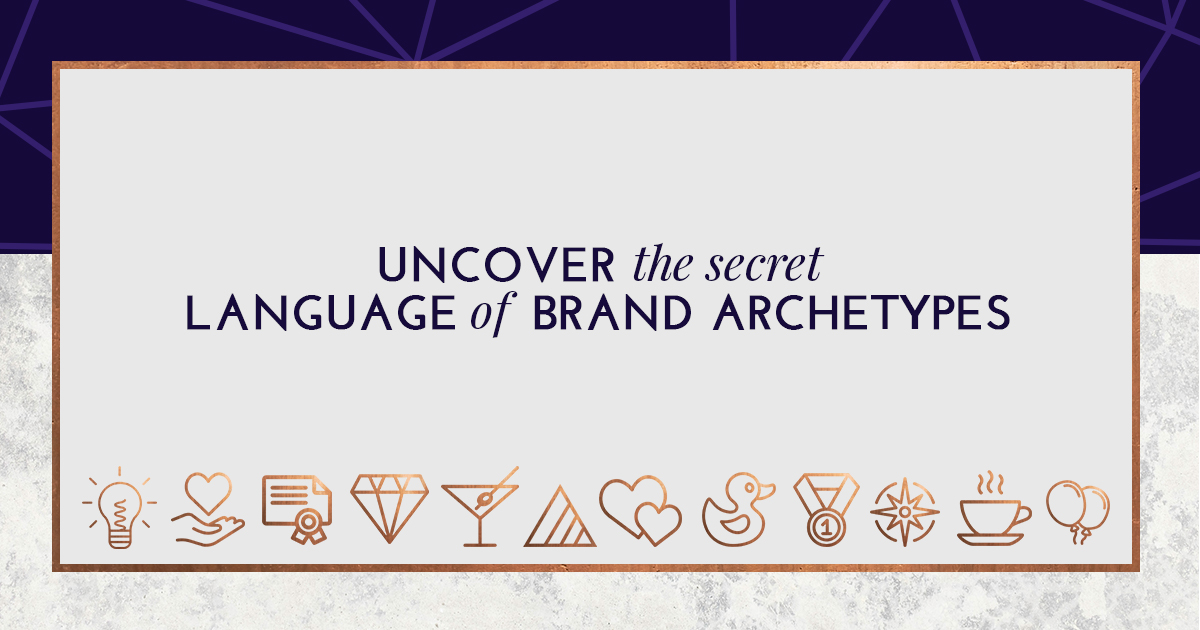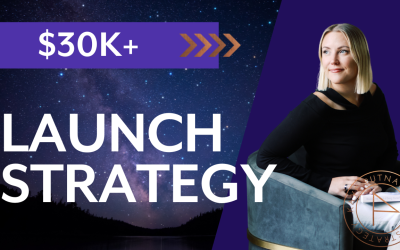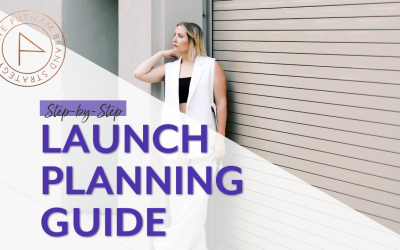You’ve made the decision. You’re jumping in head first…. grabbing the bull by the horns… sprinting towards the finish line.
You’re starting your own business.
Your finish line is having a rockin’ brand launched with adoring clients and customers eager to work with you.
When you’re first launching a new business, you’ll get a lot of advice. Your parents may tell you to be careful. Your fellow entrepreneur may tell you to invest in a coach or consultant. A blogger might tell you to have months of valuable content written before you launch. Your best friend may want to see your pretty website and logo. Even your hairdresser may have advice on how much work it’ll be starting out.
Here’s some good news – my advice will be a lot less complicated and less expensive than what others give you. I always recommend finding a way to do more *impactful* work in less time. I’m also 100% behind testing the waters before making any major investments in your brand.
I’m here to say it’s ok to launch without having everything figured out.
(In fact, it’s required. I still don’t have most things figured out. Just more than yesterday.)
Want the Masterclass in defining your brand? Enroll Here! (It’s my free premium training!)

Without further ado… here are some of my top nuggets of wisdom about building a strong brand from the start.
When in doubt, go simple.
In the corporate world, when you are starting a brand spankin’ new position, no one expects you to have ALL the answers. What they do expect is for you to have the background to understand the basics and to catch on fast. The same goes for launching your brand. What you need to remember is that while your brand may be new – the value you provide is what’s most important. Next, your unique story and background will set you apart from the competition.
That’s what you need to focus on when you brand starting out. Don’t get too caught up in the minutiae of a perfectly colored logo. Case in point: successful brands everywhere (Nordstrom, Vogue, Canon…) use simple text for their logos.
Focus on providing something valuable. Focus on telling your story. The key to attracting your best clients is communicating who YOU are, what YOU believe, and the value YOU bring. The right clients will self-select you based on that information. Lucky for you, your ideal clients have a lot in common with you. We naturally want to serve people like ourselves. Those who share similar values with us or who are working through a challenge that we have faced before. So, don’t overthink it. Be you and find your people.
Bonus tip #1: Focus on doing what you can, with what you have right now.
In the beginning, the chicken and the egg scenario happens a lot. You want to have a website, but you don’t have your products photographed yet. You want to create a bunch of new inventory, but you need capital you don’t have. Or with a service business, you need a portfolio but haven’t had clients yet. This is totally normal.
If you can’t put a site up yet, use social media for now. Or a simple landing page. If you need clients, work with some (carefully chosen) beta clients in return for feedback. If you can’t afford a designer (common!) use Canva.com or templates in the beginning. Get and stay in motion.
Bonus tip #2: Use this first opportunity to experiment and play. Do the best you can with what you have now.
Remember when I said a blogger would tell you to have tons of content ready to publish? Don’t delay launching because your content isn’t perfectly written. Or likewise, if your design, products, etc. aren’t perfect. No matter how “perfect” they are, you’ll dramatically improve over the next months and years. When you launch, you’ll have the attention of the smallest group of people you probably ever will.
Content-wise: For the first few months, focus on topics you know and care about. Develop your brand voice and engage your (future) audience. It’s especially helpful to write evergreen content when you’re first getting started. That way, if you don’t have the audience yet, the content will still be relevant and searchable when you do. Think about it like stockpiling wood for winter. Create now when you have time, so you can cash in when you’re crazy-busy with clients later.
Speaking of your people – define what you’ll be selling to them.
If you’ve already decided to launch a business, this may seem like a simple question. You’ll be selling copywriting services, motivational speaking, fitness coaching… underwater basket-weaving classes. (?!) Now, dig a little deeper. Take time to decide what need within your niche that you are solving for people. Let’s use copywriting as an example. A potential client may be looking for someone to write a sales page for their website. What if they don’t realize that you, as a copywriter, provide this service? You need to define your offer so that this potential client actually understands that they are your ideal client and they need you.
Also, look at the product or service you’d like to provide and decide if it can make you money. Take emotion out of the picture for a minute (the only time you’ll ever hear me say this) and look at facts. Does your ideal client know they need what you offer? Do they value what you’re offering? And if the answer is yes, can they afford what you want to charge? I’m not writing any of this to dissuade you from your dream business. There are successful businesses that have used marketing & branding to create desire in their clients. (Look at any high end fashion designer.) But it takes a lot of time and even more money. Be aware of possible challenges so you can make educated decisions about your brand.
Validate your idea (with help from real people)
You’ve now decided what products or services you want to provide. You may have even decided who your target audience will be.
(This next bit is *really* important.)
Be ready to change, evolve and adapt.
It’s time to get out in the world and start working with clients. At a minimum, you need to talk to real people. Remember that you may need to tweak your plans once you’re applying them to real life clients. You may realize you don’t enjoy working with the clients you’re attracting. Or you may realize you need to charge more for your signature service. So start working with clients as early as possible. Validate decisions you’ve made. Embrace the fact that while you’ve had tons of good ideas, only a few will turn into the golden ones that’ll stand the test of time.
Bonus tip #3: Whether you decide to start selling to strangers, or to test out on friends and family, remember to show you care about their feedback.
Try beta testing some of your ideas before you sell them full price. If you’re beta testing, see if you can get a few fellow entrepreneurs to participate. Rather than depending on you, yourself, and, well… you (this doesn’t work as well as “me, myself, and I”), call in reinforcements! Use the beta tests, interviews, and surveys to make the decisions I spoke of above. You’ll prove to prospective clients how much you care. Added bonus, you’ll be networking with other like minded entrepreneurs. All while finalizing major decisions about your brand. This will be a great first step towards building credibility with your audience.
Make updates as you grow.
NOBODY starts out perfect, with it all figured out. If you don’t believe me, visit your favorite famous YouTube channel. Go alllll the way back to their very first upload. You’ll notice a pretty stark difference between their early videos versus where they’re at now. This is because we all learn and grow over time. If you waited until you knew everything, you’d never start.
My advice? Start before you’re ready. Get the ball rolling. The great thing about launching your own brand is that it’s easy to go back and make edits down the road, if you choose to. Maybe after you’ve been at it for a year or two, you’ll decide you want a professionally designed logo. Or maybe you’ll decide you only want to use certain types of photos in your published content. Great news – this is all editable – brought to you by the gods of WordPress (or whatever platform you’re using).
Bonus Tip #4: Take advantage of the hundreds of thousands of templates out there to make your brand beautiful.
If you can get a template that communicates your brand message for $30 from Creative Market, why wouldn’t you? Save the custom design for the most important projects or for those where you can’t find a good template to fit your needs. Or for when you have a bigger budget (like my 1-on-1 clients). As a newbie, embrace templates and do your best. The key to making templates work for you is to first decide what your brand message and visual style are. Then, look for that specifically so you aren’t tempted by all the other styles available. Find the one that’s as close to what you want as possible, and take it the final 10-20% to match your brand.
Define your brand personality
Time for my favorite subject – brand archetypes. Why are they important? Deciding on your brand archetype will make your message, vision, values, content, and design fall into place. It’s the answer to the question most people don’t know to ask about their brand.
How do you want your brand to show up in the world?
Do you want to send a renegade message…
That defies society’s norms and calls to others who challenge the status quo?
Or do you want to create a brand that’s better defined as a community…
That welcomes people from all walks of life into a safe and friendly environment?
By defining your archetype, these questions are easily answered. You’ll identify with a timeless archetype (or blend) and learn how to incorporate into your brand. You’ll shape your content, presence, and tone with one unified message.
Bonus Tip #5: Take my Brand Personality Quiz
Do you know which archetype you identify with most? Many people don’t – even when they have been running their business for years. To get started defining your brand archetype – take my Brand Personality Quiz. Once you know your brand archetype, your options are limitless. And don’t forget to check out my information pages and blog articles dedicated to each archetype.
Pull inspiration from a variety of sources
When you are shifting from consumer to business owner, it’s time to pay closer attention to your own experiences with different companies. Do you have a favorite restaurant? Clothing brand? What makes them so special to you? How can you incorporate those themes or ideas into your own industry?
Also, look at your seemingly unrelated interests. Could you incorporate your love of hiking into your business in an interesting way? Pay attention to what are you drawn to visually in every area of life (art, interior design, vehicles, travel.) Consider how you can use those to inform visual brand decisions.
When you are starting out, it’s tempting to emulate the leaders of your industry. This works to a point, but it’s more important to create a brand that accurately represents your strengths and personality. Following others (especially only in your industry) will never create the results you want. It’s the echo-chamber effect. People pay attention to the person creating the echo, not everybody that follows.
Bonus tip #6: Pinterest is still my favorite tool for collecting visual inspiration into a central place – use it!
Create a board that represents your brand and pin everything you can find. Include designs, art, photography, lifestyle images, inspirational quotes, etc. Once you have a collection of images, you can start to see common threads. You might see a color scheme emerge. Or brand messaging.
Bootstrap with online courses, self-education, and group programs.
If you’re feeling stuck, uninspired, or just straight up LOST – never fear! There are TONS of amazing resources out there to help you. A simple Google search will provide you with the tools you need to teach yourself. Take e-courses on sites like Skillshare or from your favorite entrepreneur. Read books and articles.
Or best yet, find group programs. Many experts (myself included) offer courses to teach material offered to 1-1 clients in a live group environment. Full transparency here – the expert offering the course loves it just as much as those purchasing it. In this environment, the expert can provide more value to their clients in less time. But the win for you? You get expert knowledge and real-time feedback at a lower cost. Plus you have the added benefit of a new community of like-minded entrepreneurs.
These days, there’s SO much life-saving material out there on the web. Whether it’s free or a small investment, it’ll be worth your time researching to find the best fit for you.
Collect Credibility
As you’re beginning to establish your business, it’s *especially* important to focus on building trust. People don’t know you yet. You haven’t built a reputation. It’s crucial that you share with your audience who you are, what you do, why you’re exceptional, and how you can help them. You business will thrive on your ability to create strong, emotional connections with your audience.
Bonus Tip #7: Challenge yourself to write a list of 100 reasons why someone should hire you.
You have more to offer than you think. Think about your past jobs, education, and people you’ve helped. Also, think about all of the benefits and life changes your future client gets from working with you. Consider all the ways they save time and money. Think about all the pain/frustration you alleviate for them. When you’re done with this exercise, you’ll have a master list of all the reasons someone would be crazy not to hire you! You can use this list to help write your website and as a shot of confidence whenever you need one.
Surround Yourself with Other “Crazy” Entrepreneurs
Even as entrepreneurship gets more popular, it’s still an uncommon path. You may not know many business owners in your personal life. Your family might think you are off your rocker. Your friends might not understand why you turn down an invitation to go out to work on your business. All totally normal.
Focus on finding your “cohort” of entrepreneur friends. Find inspirational stories of those who are farther ahead of you. Be intentional about the messages you consume. Be intentional about the people you surround yourself with. If your goal is to create a 7-figure business, find others that have. If you want to build a media empire through a blog, find successful bloggers and others with the same dream. Don’t limit your success by refusing to invest in relationships.
If you’ve ever noticed that entrepreneurs read a disproportionate amount of self-help and personal development material, it’s because this path demands a lot from you. You’ll be asked to stretch way outside of your comfort zone. You’ll be more visible. You’ll need to be a leader.
Bonus Tip #8: Investing in a group program gives you a bonus…networking!
Remember when I mentioned group programs above? Investing in one is a great way to meet other like-minded entrepreneurs. You can also seek out masterminds and paid communities that ensure you are around other people who are serious about investing in their own success. The investment can feel steep at first, but it puts you in proximity of people who are on the same path as you. Those relationships can be invaluable.
In Summary
When you’re starting a new business, *designing* your brand shouldn’t be at the top of your priority list. Figuring out what you do should be. Getting into action. Testing your theories. Working and talking with real, live human beings.
If you’re starting a blog, writing lots of content is the most important part.
Starting a podcast? Record lots of episodes.
Going to be consulting? Host free workshops first, like my client Fleur Larsen did.
Once you establish the basics and you have the consistency and grit to keep going, THEN work on design.

So what next?
It’s too easy to get hung up on the little details when launching a brand. Remember that delaying your launch delays you from serving your clients and customers. They are out there, wanting your help. Now. Ready or not. So, allow yourself to take a risk and tighten up later. This is your time to explore!
Speaking of exploring… the BEST way to fully understand and define your brand is by taking the psychology-first approach to branding. I teach this process in my Brand New Brand program.This is my program for entrepreneurs who are just getting started, and need to build their brand from scratch. It’s for those dreamers and do-ers who are at less than $100K in revenue, and who want the step-by-step process that I use with my more established one-on-one clients. If you’re ready to begin, join Brand New Brand and start to uncover your brand’s *true* potential.
Want more FREE training? Enroll in the Define Your Brand Masterclass to build your 1-page brand plan, right there on the spot!





